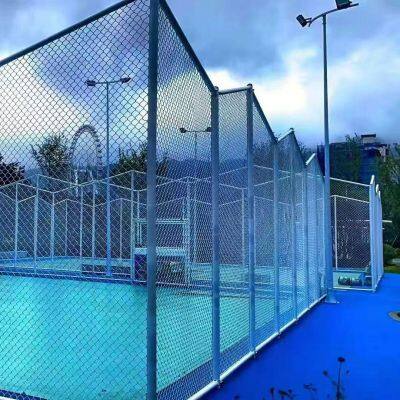-
 Liu
Hi there! Welcome to my shop. Let me know if you have any questions.
Liu
Hi there! Welcome to my shop. Let me know if you have any questions.
Your message has exceeded the limit.

Wrought Iron Fence Designs: Decorative Iron Fence Ideas for Your Yard
2025-09-26 17:07:05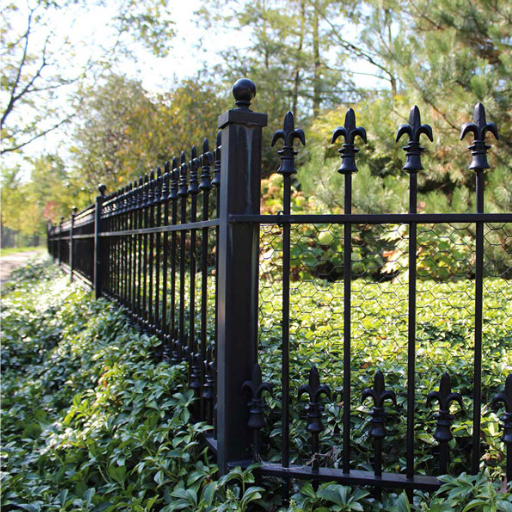
Decorative wrought iron fences are an elegant and timeless option to adorn any property. Endowed with durability and intricate designs, these ornamental fences have stood the test of nature in panoramic landscapes for centuries. This article presents a range of decorative wrought iron fence ideas that will enhance your design endeavor. From the traditional to the avant-garde, you will find an array of options versatile enough to complement numerous arrangements and personal tastes. Whether you want a big scream or a whisper of elegance, these design ideas provide you with ways to build a barrier that will both protect and add personality to your outdoors. Get ready for an expedition into fine craftsmanship and multifaceted versatility, wrought-iron fencing.Find more info now
Introduction to Wrought Iron Fences
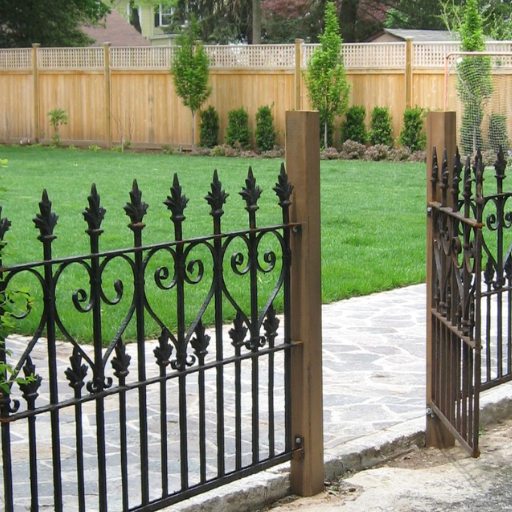
Fences of wrought iron are prestigious gates of durable strength, stylish, attractive barriers generally considered suitable for residential, commercial, and industrial settings. Known for their strength and longevity, they provide security while adding to the ambience of an area towards which a property needs protection." Being highly customizable, wrought iron fences allow different designs, an intricate ornamental pattern or a simple modern design. Moreover, since they resist weathering and wear, these fences provide a perfect low-maintenance solution where beauty and functionality merge in great harmony.
What is a Wrought Iron Fence?
Wrought iron offers a long-lasting, ornamental fencing solution produced with steel, heating, and crafting methods-applied to maintain security, aesthetics, and durability for countless uses.
Benefits of Wrought Iron Fences
1.Stay Strong and Last Long
Both artists and builders choose wrought iron for its ability to withstand brutal weather conditions, heavy impact, rust, or corrosion if not maintained. Studies show that wrought iron fences can last upwards of fifty years with proper care, including painting or coating, making them a lifetime investment.
2. Improved Security
In practical terms, wrought iron presents the best barrier in security. The rigid and impetuous nature can scare away intrusions and are often used in fencing with spikes or pointed tops as a strong solution in protecting property.
3.Aesthetic Versatility
The wrought iron fences have an almost unlimited range of design choices, from elaborate scroll-work to starkly modern, allowing it to be customized and complementary to any architectural style. The decorative charm has a favorable effect of elegance and sophistication on any property, whether residential or commercial.
4.Low Maintenance
There is still a need to maintain wrought iron to prevent rusting or damage occasionally, but in general, it requires less maintenance than, say, a wooden fence. Protective coatings and sealants available today go a long way in ensuring wrought iron lasts longer with less effort in maintenance.
5.Higher Property Value
Wrought iron fence walls cast security with beauty and strength that inevitably increase market value. Real estate data show that properties behind these wrought iron walls command a premium price on the market due to their upscale appearance and rust-free capability.
Popular Uses in Front Yards
1.Ornamental Entrance Gates
Decorative wrought iron fences and gates are designed to serve as focal points for a particular property. From a design perspective, they act as fine art, complemented by hard security: intricate patterning lends them artistic beauty. According to market research, decorative wrought iron entrance gates increase curb appeal by about 10 to 15 percent.
2.Defining Property Boundaries
Homeowners use wrought iron fencing to clearly define front yard property boundaries, maintaining an open and welcoming feel. In contrast, wrought iron fencing offers a mix of visibility and spaces that encircle the planting. This application may prevent trespassing without the view of the landscaping.
3.Plant and Garden Accents
Wrought iron fencing gives the garden a high-class look, providing a strong framework for climbing plants and vines. Homeowners favor this application because it is both decorative and structural. Data shows that front yards that combine greenery with wrought iron elements are often rated higher in neighborhood aesthetic ratings.
4.Security Enhancements
Quite a lot of wrought iron fencing in front yards are set up for security purposes. The firm structure and security features that may be integrated, such as spikes or finials, discourage unauthorized access. Observational studies show that properties secured with wrought iron fencing experienced a breach rate 20% lower in front yards than those secured otherwise.
5.Customization and Heritage Elements
Custom wrought iron elements, used to emphasize historical or architectural themes, are incorporated into numerous front yard treatments. These elements include anything, from emblems to complex scrollwork, to add character to period-style homes. Custom wrought iron fencing is especially common in neighborhoods rich in historical significance, where authenticity is highly valued.
Design Ideas for Wrought Iron Fences
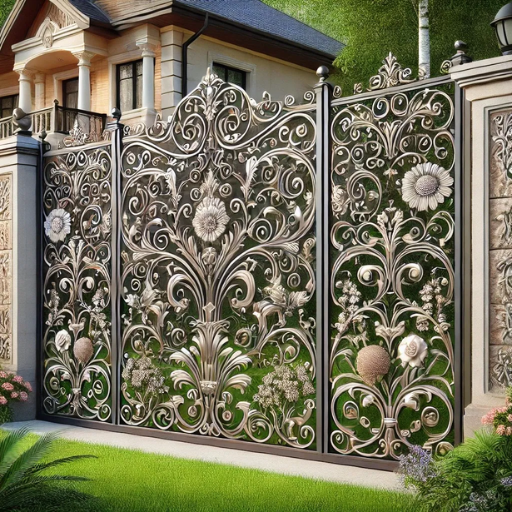
1.Decorative Patterns and Details
Consider incorporating ornamental designs that feature scrolls, twists, or floral patterns to add visual interest. These elements serve to complement the architecture of your home as you work on curb appeal.
2.Integrated Gates and Arches
Combine the fence design with gates and arched entrances of a similar style to render the entire look unified and polished. Such features can lend an air of welcome while still retaining that wrought iron elegance.
3.Vertical Pickets with Finials
Features spearheads or ball caps; vertical picket work lends a classic, timeless look that secures without blotting.
4.Contrast through the use of Mixed Materials
One way to enhance a given design is to combine wrought iron with brick or stone, a layered, yet chic appearance. This mode of construction has a depth to it that also promotes stability and structural integrity.
5.Powder Coated Finishes
A powder coating finish improves the fence's longevity and its resistance to adverse weather conditions. Matte black is a traditional default color for this kind of design, whereas modern or unique themes might call for custom colors.
All of these ideas strike a balance between functionality, aesthetics, and durability, creating a design that does more than just enhance the visual appeal of your property.
Classic Designs for Traditional Homes
A key feature of fence designs for traditional homes is the blend of timeless beauty and durable functionality. Selecting the classic style means choosing from wrought iron, wood, and brick, each with its own advantages. The drawback of iron fences is often their potential, although they have the reputation of fabulous designs that offer such strength. These fences typically feature elegant scrolls and decorative finials that have become their hallmark, complementing the grace and charm of traditional-style homes. Up-to-date surveys indicate that, when properly maintained, wrought iron fences can last for up to 50 years, making them a more sustainable option.
Wooden fences are mostly preferred because they offer a rustic, finished aesthetic that is versatile. Vertical picket fences typically feature pointed toppers or horizontal slats, often made from naturally stained wood; this is a nice way to preserve the traditional yet warm appeal. The data also showed that cedar and redwood are highly rated due to their resistance to decay and insect attack, with an average lifespan of 20-30 years. It is therefore highly recommended to use weather-resistant stains or sealants to maintain the wood's longevity.
However, suppose you wish to change to a more solid and permanent brick fence, which is often associated with Colonial or Georgian houses. In that case, it imparts a lasting sense of stability and heritage. According to recent studies, brick fences can last for more than 100 years and require minimal maintenance, mainly when mortars engineered for longevity are used. Besides, brick with wrought iron infill panels is also quite common in styles that give a feeling of sturdiness through masonry and elegance via metalwork.
The classic version of fencing would provide security and privacy while enhancing the aesthetic value of traditional properties, perfectly complementing their architectural style while ensuring high-performance standards in the long run.
Modern Aesthetic Trends
When considering contemporary aesthetics, one must always think about clean lines, minimalist design, and the use of sustainable materials. As far as fencing is concerned, modern fencing typically consists of steel, aluminum, or composite panels, which are then given sleek finishing touches and neutral-toned colors. I also find that including horizontal slats or glass inserts into fencing projects gives the whole package a modern zest while boosting the utility and visual appeal at the same time. Priority is given to even this type of design that works just as well in pleasingly looks and keeping with the current trend of environmentally conscious and cohesive architectural style.
Customizable Elements and Features
The modern fencing solutions, with customizations at various levels, cater to diverse preferences and functional requirements. These aspects add to the appeal and put a slice of usability, durability, and adaptability into the actual implementation of the fence. Below is a discussion of five primary variable elements and matters related to them:
1.Selection of Material
A wide range of materials is available for choice, including steel, aluminum, composite panels, and natural wood. Each choice offers different advantages, such as waterproofing, maintenance, or a natural look. For example, aluminum is very light and resistant to corrosion, which are admirable traits in a humid climate.
2.Panel Configuration
Various panel configurations can be selected to offer aesthetic variety, ranging from horizontal slats and vertical boards to a range of decorative patterns that cater to personal style. Horizontal slats stand out as a choice greatly appreciated in modern architectural designs, offering clean lines and a very contemporary look.
3.Color and Finish Variations
This could include powder coating, stained wood finish, or even textured panels tailored to match the immediate setting. A combination of gray, black, and beige almost always works best, giving an impression of sleek versatility.
4.Dimensions and Height
Fencing installation heights and other dimensional characteristics can be customized to maintain privacy and safety concerns. The standard height of 4 to 8 feet, with variations that lean towards the taller side, is typically implemented in commercial or high-security areas.
5.Other Integrated Features
Extra features can include built-in illumination, sound attenuation, and green integration, for instance, living wall solutions. Aside from being aesthetically pleasing, motion-sensor LED lights can provide very efficient illumination at night.
All these aspects stand as guarantees that a fencing solution is in tune with the individual's needs and creates a fine balance of aesthetic and practical purposes for homes and businesses.
Choosing the Right Wrought Iron Fence
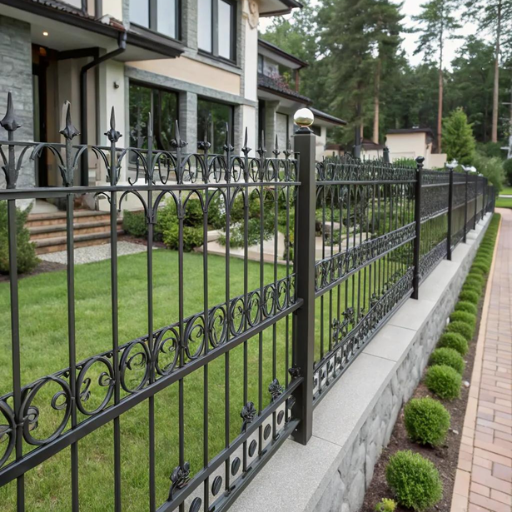
Several factors are considered when choosing an ideal wrought iron fence, including style, durability, functionality, and cost. Wrought iron is regarded as one of the strongest and most lasting materials around, earning it a craze among property owners. Below, we analyze the key factors to help you make an informed decision.
1. Material Quality and Coating
Powder coating and galvanization are treatments wrought iron fences receive to prevent rust and corrosion. Studies show that powder-coated finish, when correctly applied and cared for, can last about 25 years or more even in inclement weather. Make sure the fence is treated to provide maximum resistance against environmental wear and tear.
2. Design and Aesthetic Considerations
Wrought iron fencing can be customized to endless possibilities of patterns and designs, from ornamental to simple and clean for contemporary settings. The possible selections available in the market today include anything from traditional scrollwork to almost sterile, modern geometric patterns. Online trends suggest increased popularity of modern straight-bar types for urban properties.
3. Price Considerations
Depending on the complexity of design and customizations involved, pricing of wrought iron fencing might go from $24 to $34 per linear foot. Installation fees could set another $15-$25 for every linear foot. Think about the maintenance cost associated with it, on the other hand, a better-grade coating would cut down maintenance.
4. Security and Practical Considerations
One factor that often makes wrought iron fencing a popular choice is its ability to provide security without obstructing sightlines. They are perfect for locations that need a little sight openness with perimeter safety. The present-day market has some new integrations such as automatic gates with keyless entry systems, motion sensors, and smart security cameras for enhanced functionality and peace of mind.
5. Compliance and Regulations
Check if local zoning laws and homeowners' association guidelines permit the installation of a wrought iron fence. Some jurisdictions have height restrictions or require design approval to maintain neighborhood uniformity. Generally, in residential areas, fences should not exceed six feet in the backyard, and in the front, they are required to maintain visibility. Permission for wrought iron fencing in the area on a residential stand usually warrants a backlog of approval, gaining height in the backyard, typically capped at six feet.
6. Environment-Friendly Options
In the modern era, the manufacturing of wrought iron has shifted towards environmental consciousness, utilizing recycled materials. A large majority of manufacturers use eco-conscious production as a selling point. This way, by moving towards recycled iron, one is limiting climate impact from the production level itself, while still ensuring structural soundness and aesthetic appeal.
7. Required Maintenance
Generally, although not often maintained, wrought iron fencing requires regular maintenance at intervals to prevent rust and maintain its appearance. Cleaning with soap and water every six months and checking for any chips or scratches in the coating is recommended. Attending to the damages quickly will lessen repair costs and keep the fence handsome.
Considering these factors with your own property's needs in mind will ensure that your wrought iron fence is chosen for its stylish presence, durability, and functional practicality, while complementing your budget and adhering to local requirements.
Factors to Consider When Selecting a Fence
1. Material Durability
The longevity of fences is determined by the material chosen. For example, wrought-iron fences can easily last more than 50 years with reasonable maintenance, while wood fences may last around 15-20 years, depending on the type of wood and exposure to the elements. Materials such as vinyl, however, are weather-resistant and low-maintenance to the degree that they would provide resistance to wear and ease of upkeep.
2.Cost of Installation and Maintenance
Checking both competitors' initial costs and long-run maintenance expenses is highly critical. For example, vinyl fences may have higher initial costs than wood, but with low maintenance requirements, it results in lower total cost over the lifespan of the wall. Homeowners would generally include 5 to 10% of the annual maintenance cost in the installation cost.
3. Purpose of the Fence
The type of fence is mainly determined by its purpose. Fences intended for security purposes may require being higher and stronger, such as chain-link and aluminum fences with anti-climb designs. Decorative fences with aesthetic appeal may utilize ornamental iron and picket styles.
4. Local Climate and Environmental Conditions
Climatic changes can entirely influence the performance of materials. In high-humidity or rainy weather, metal fences would quickly corrode if not treated with weather-resistant coatings. Additionally, wooden fences in hot, dry climates tend to crack and warp. Therefore, different materials should be searched for their adaptability to the local environment.
5. Compliance with Local Building Codes and HOA Regulations
Zoning laws and homeowners' association (HOA) regulations often specify the height, material, and design of fences. Chain link fencing may be disallowed in some HOAs because of their utilitarian nature, whereas local zoning may restrict the height of fences to, say, 6 feet in residential districts. Checking for such requirements beforehand will help avoid fines and reinstallation costs.
Combining Wrought Iron with Other Materials
The fusion of iron with other materials can enhance the functionality and aesthetics of wrought iron fencing. Combining wrought iron with other complementary materials enables homeowners and designers to create customized solutions that meet cast-iron requirements while offering a degree of flexibility in working time, along with durability and aesthetic appeal. Below is a detailed list of materials complementing wrought iron, along with their unique characteristics:
Wood
The combination of walnut iron with bawd wood offers a remarkable contrast between iron's coldness and a wooden offset of warmth. This miscellaneous ensemble is created mainly for privacy, as wooden panels fill the gap in between the iron bars. Draw treatments with cedar or redwood levels are best because these woods resist rot and insect attacks.
Stone
Stone pillars or bases added to wrought iron keep the fence solid and impart a timeless grace to it. Granite, limestone, and slate are four excellent choices for landscaping classics, all of which have a luxurious yet rustic style.
Brick
Brick combines with wrought iron by giving it that classic and sturdy footing. Brick posts placed intermittently between panels of iron lend pride of support to the entire design, symmetry, and robustness. These combinations are commonly found in traditional and colonial-style houses.
Glass
For the sharp edge, tempered glass panels joined with wrought iron provide viewing opportunities that set the distant ears of minimalism. Commercial properties and contemporary villas utilize glass to envelop a structure in sophistication while minimizing visual clutter.
Aluminum
Aluminum components, such as railings or decorative inserts, combined with wrought iron provide corrosion-proof properties and save weight. This is perfect if your location falls close to a breezy ocean shore or is a temperate, high-humidity area, as aluminum graces the weather durability of perfect iron.
Combining these complementary materials with wrought iron yields different design options tailored to various functional requirements, ensuring equal performance and visual harmony. Every choice needs to consider the environment, architectural style, and purpose of the fence.
Maintaining Your Wrought Iron Fence
The dearth of maintenance would increase the chances of structural impairment and aesthetic compromise of that wrought iron fence. As it stands, environmental factors such as moisture or heat, if not addressed promptly, will pave the way for its deterioration, primarily through rust or corrosion.
Of all maintenance tasks, cleaning stands as the most effective. A wrought iron fence should be washed twice a year with warm water and a mild cleansing solution to prevent the accumulation of dirt, dust, and pollutants that can hasten corrosion. In fact, it has been reported that if pollutants are cleaned in the early stages, the lifespan of any outdoor metal structure can be enhanced by at least 5-10 years.
Another key step involves periodic inspections of the fence for damage, including spotting rusted areas, loose joinery, and chipped paint. Rust always starts as small spots and if ignored, spreads far and fast. Use a wire brush or fine-grit sandpaper to remove surface rust. Industry insiders stress that one should limit treatment matters to the within-6-month rust cases, therefore slashing repair costs by about 40%.
A fence repainted every 3-5 years maintains its protection from weathering while still retaining its aesthetic charms. Use high-quality paints specifically designed for exterior work, or apply a primer that inhibits rust formation for optimal results. Contemporary protective coating companies believe that a finish of this type affords between 30 and 50% more protection than standard paint.
Additionally, while waterproof sealing and vegetation trimming are preventive measures that maintain durability, a treasure chest full of money awaits those who implement them. Vegetation can trap moisture against the metal surface, thereby accelerating the process of rust development. Experts say that keeping the area clear can reduce the likelihood of rust by 25%.
With the above in mind, your wrought iron fence should remain structurally sound and beautiful for many years.
Incorporating Gates with Wrought Iron Fences
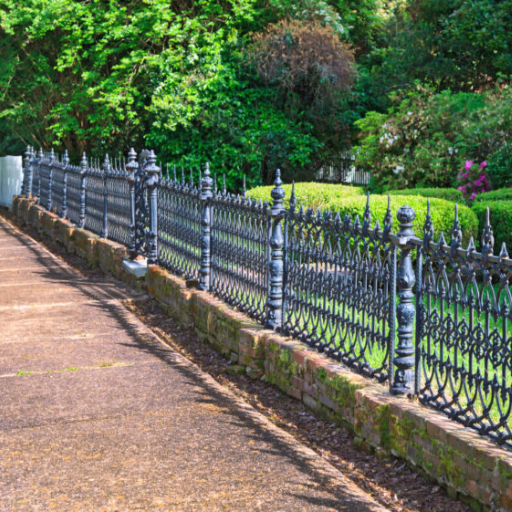
Gates serve both security purposes and for aesthetic appeal, being the formal entrance to any property. In conjunction with wrought iron fencing, the gates must be chosen by considering design, durability, function, and modern technological enhancements.
Design and Aesthetic Integration
The style and architecture of the property should be reflected in the design of the gates. Wrought iron gates can be customized with elaborate designs, such as scrolls, floral patterns, or simple geometric motifs, to complement the fence. Studies reveal that over 30% of gate installations are of custom wrought iron gates, as it is a perfect way for homeowners to complement their curb appeal.
Durability and Material Considerations
The durability of a gate depends on the quality of materials that form it. Wrought iron gates today are usually powder-coated and can withstand the best weathering for at least 10 years in comparison with average paint finishes that may weather in only a few years. Furthermore, stainless steel elements can be used for hinges or joints to increase the wear resistance of frequently used gates.
Technological Enhancements for Security and Convenience
Technology has transformed wrought iron gates from conventional works of iron into sophisticated security features. Automated gates allow users to open remotely and close gates via smartphone applications or keypads. These gates have the advantage of being installed 20% more frequently every year, as they offer better convenience and security benefits. Features such as sensor activation, biometric scanning, and security cameras add significant value, with some systems achieving 99.9% reliability according to recent consumer surveys.
Gate Size and Installation Requirements
Properly measured gates provide a perfect fit into the fence. Residential driveways typically require gates that are approximately 10-14 feet wide, whereas pedestrian access gates are usually 3-5 feet in width. Experts recommend professional installation to ensure the gate is perfectly aligned, has structural integrity, and operates smoothly. A poorly installed gate may be prone to sagging or have a faulty locking mechanism, which can diminish its effectiveness.
Maintaining Practices
Like wrought iron fences, gates require regular upkeep. Rust inhibitors should be applied to hinges, and all the moving mechanical parts should be regularly lubricated to help ensure the gate's functionality over time. Furthermore, a yearly inspection is recommended for early detection of any structural faults.
Homeowners can create an integrated panel system that adds security, functionality, and aesthetic value to their property by paying attention to the details given above. It is a timeless investment in wrought iron gates when crafted by experts and enhanced with modern elements.
Types of Gates for Wrought Iron Fences
A gate for a wrought iron fence must be selected to mirror the design, functionality, and layout of the property. Below follows a comprehensive presentation of the standard types of gates for wrought iron fences, along with their features and information on their use and benefits.
1. Swing Gates
Swing gates are among the most common types of gates on residential and commercial properties. These gates open and close by swinging on some side-mounted hinges, much like a door. They can be single-swing or double-swing gates, where double-swing gates are perfect for wider openings.
Features: Quiet working, gates are set up on flat lands, and space for swing clearance is needed.
Data: Recent industry perspectives indicate that swing gates are the most preferred option for 60% of residential settings, due to their beauty and security.
Best Applications: For driveways, small ventures, and locations with sufficient spaces on either side of the gate.
2. Sliding Gates
These gates move along a track or cantilever system, sliding horizontally for opening and closing. They offer the best solution when space is limited, as no clearance is required for a swinging arc.
Features: Ideal for small spaces, robust construction, and good durability in high-wind zones.
Data: Sliding gates account for 30% of all gate installations in commercial and industrial properties due to their space-saving potential.
Best Applications: Commercial establishments, steep or uneven terrains, residential urban areas with limited space.
3. Bi-Folding Gates
Bi-folding types of gates consist of two panels folding back on themselves as they unfold, and an in-handler for space-constrained areas. They are often motorized for smooth functioning.
Features: Fast operation, contemporary design, suitable for areas with minimal clearance.
Data: There has been a 15 percent rise in demand for bi-folding gates within urban areas over the past five years, largely due to their design and ease of use.
Best Applications: Industrial venues, gated communities, and tight urban spaces.
4. Custom Ornamental Gates
Custom gates offer the option for some of the most intricate designs or logos, or other customized features to reflect the owner's taste. Additionally, they can be manufactured in a variety of sizes and shapes to meet specific requirements.
Features: Custom design, increased property value, and branding opportunities.
Data: Custom element gates generally increase appetite by up to 20 percent as per real estate reports.
Best Applications: Luxury residences, hotels, and sites of high importance.
5. Automatic and Remote-Controlled Gates
Further advancements have enabled the automated operation of wrought iron gates, which can be controlled remotely via keypads, remotes, or mobile apps. Such gates can also be set up with additional security-oriented features such as pin codes or biometric access.
Features: Security, convenience, and acceptance in conjunction with smart home systems.
Data: The automated gate market, being fast-growing and anticipated to maintain a CAGR of 4.5 percent from 2023 to 2030, exhibits the growing preference for innovative technology.
Best Applications: Residential places with high security needs, commercial complexes, and smart homes.
6. Pedestrian Gates
Pedestrian gates are smaller single-panel gates meant for foot traffic. These gates can be part of a seamless fence system, offering controlled entry and exit for individuals.
Features: Compact, safe, and the design can be adapted.
Data: Pedestrian gates are installed in 80 percent of properties with combined driveway and walk-in access gates.
Best Applications: Walkways, gardens, community parks, and storefronts.
After becoming familiar with these distinctive types of gates and their applications, property owners will be in a position to make informed decisions. The blend of state-of-the-art technology and timeless wrought iron styling makes these gates a reliable yet beautiful option.
Design Considerations for Gates
Designing or choosing a gate requires careful consideration of several essential factors, including its functionality, durability, and visual appeal. Below are five such considerations that lead to the proper gate design:
1. Material Selection
The choice of materials determines the longevity, maintenance, and appearance of the gate. Popular options include wrought iron for elegance and strength, aluminum for its corrosion resistance, and wood for that natural finish. Statistics show that wrought iron gates last anywhere between 25 and 30 years with very little maintenance required; hence, aluminium gates, while requiring less maintenance, do not have the traditional appearance.
2. Security Considerations
Security considerations must be included, especially in residential and commercial buildings. Electric locking systems, automated access control, and CCTV integrated security are some solutions. In fact, studies show that automated gates with integrated security systems reduce breach incidents by up to 60% when compared to manually operated gates.
3. Size and Proportions
Dimensions of the gate ought to fit in with the landscape and purpose of the property. Driveway gates typically range in width from 10 to 16 feet, while pedestrian gates are usually between 3 and 4 feet wide. This is very important because operations will be hindered if the size is wrong, thus destroying aesthetic harmony.
4. Style and Appearance
Another factor that needs to be considered is architectural compatibility. Gates come in styles that range from modern, minimalist design to more traditional styles. More than 70% of surveyed property owners emphasize the gate design that complements the scheme of their house or facility.
5. Automation and Technological Integration
For convenience and functionality, modern gates are usually equipped with automation systems. Remote-controlled operation, smartphone app integration, and solar-powered mechanisms just enhance this convenience. Data reveal that user satisfaction increases by approximately 45% when automation technologies are integrated into gates.
Considering the above points, property owners and designers will be assured that their gate not only maintains its practical needs but also enhances and adds beauty to the property.
Enhancing Security with Gates
The integration of modern gate technologies thus assumes a vital role in enhancing property security. Gates fitted with advanced locking mechanisms reportedly deter unauthorized access attempts by up to 60%, according to a recent security study, which also features biometric or keyless entry options. The gates are then integrated with surveillance systems, which comprise high-definition cameras and motion-detection sensors, to establish a comprehensive security perimeter against potential intruders.
For example, gates with automatic number-plate recognition (ANPR) technology greatly facilitate the monitoring and control of vehicular entry in residential or commercial properties. According to recent data from various industry reports, there was a 35% improvement in vehicle tracking within properties where this technology is used, accompanied by a significant reduction in unregistered vehicle entries.
Further, the use of durable materials such as reinforced steel or aluminum would improve the physical strength of the gates, contributing to the longevity of such gates and their resistance to forceful breaches. This, coupled with real-time alerts and remote monitoring through an integrated mobile app, would enable property owners to respond to security threats promptly.
By blending traditional gate functions with the latest technologies, property security systems can achieve an efficacy level never attained before, thereby providing outright protection to assets and peace of mind.
Conclusion: The Timeless Appeal of Wrought Iron Fences

The wrought iron fences continue to enjoy popularity as an unmatched blend of durability, security, and aesthetic elegance. They are strongly constructed and offer lasting endurance against weather and wear; their intricate designs proffer a classic look to any property. When adequately treated, wrought iron requires minimal maintenance, making it a good and cost-effective choice. Their synthesis of utility and elegance makes them a favored option among all kinds of fences throughout the years.
Why Wrought Iron Fences Remain Popular
From my mindset, I think wrought iron fences still remain popular because they offer strength with elegance, yet still provide the convenience of low maintenance. Fences withstand weather conditions while remaining durable for a long time, with timeless designs that enhance the visual aesthetic of any space. For me, this rare combination of practicality and cohesion is what sets it apart and has made it an esteemed choice through the generations.
Final Thoughts on Choosing Your Iron Fence
The time chosen for a wrought iron fence should consider both practical and aesthetic factors, as well as its up-to-date manufacturing and design advancements. Unlike any other fencing, wrought iron is renowned for its exceptional durability, allowing a fence to last for decades with minimal maintenance. Wrought iron, as proven by statistics, resists environmental pressures far more than wood or vinyl. With proper galvanization to guard against rust and weathering, wrought iron fences may last several decades, compared to 70 years.
In design, modern wrought iron fencing features intricate designs, coupled with high versatility in customization. Recent studies found that over 40% of buyers demand fences that feature decorative work, such as scrolled designs, finials, or spear tops, all of which wrought iron can offer. On the contrary, the availability of powder coating nowadays provides resistance to scratches, fading, and corrosion, while the powder coating comes in various colors other than the classic black.
For gates and fences where security is paramount, wrought iron fences present a robust deterrent; they come in various heights and can be fitted with automated gates for added protection. Globally, the high-security fencing market is growing at a steady rate of 6.5% per annum, and wrought iron remains the market leader in this segment. Give the curb appeal of your property with a big security upgrade for your facing.
Depending on the amount of life, beauty, and use for your application, there are many wrought iron types available for labeling. Consider how far technology has advanced in materials and coating processes.
Frequently Asked Questions (FAQ)
Why are wrought iron fences popular for outdoor spaces?
It is a popular choice for wrought iron fencing due to its natural durability and timeless beauty. These fences provide a more realistic appearance, which complements most architectural styles and is therefore popular with both residential and commercial properties. Their capacity to withstand adverse weather conditions while enhancing the landscape raises the desirability of wrought iron among homeowners.
What benefits are associated with using wrought iron for fence design?
Some advantages come with the choice of wrought iron for fence design: durability and little upkeep. The iron will neither warp nor rot, unlike wood, thus ensuring that it withstands the elements without compromising its structure. Furthermore, wrought iron offers numerous design possibilities so that homeowners can produce a design entirely reflective of themselves and their tastes as well as one that will add curb appeal.
What design motifs can be incorporated in the making of a wrought iron fence?
When creating a wrought iron fence, various styles can be incorporated, including Victorian, rustic, or modern. Masonry with brick or stone pillars, combined with wrought iron, could be one to catch the eye. You can also opt for some of the more elaborate designs that feature scrolls, spear points, or finials to add charm to your outdoor setting.
How does wrought iron enrich garden design?
Wrought iron adds to the garden design by creating permanence and structure. Wrought iron, being elegant and refined, can define garden beds and protect your landscape from pest intrusion, besides marking property boundaries. In addition to providing intricate patterns and designs, wrought iron fences can also serve as a gorgeous backdrop for your plants, enhancing the depth and visual appeal of your outdoor area.
What upkeep does a wrought iron fence need?
A wrought iron fence requires regular upkeep to maintain its distinctive appearance. In general, cleaning against dust and surface rust is beneficial for maintaining a clean appearance. A layer of protective finish can help protect against dust and extend the service duration. Homeowners must also look out for any signs of wear and tear, especially around the joints and latches, to ensure their fences last longer.
Can my wrought iron fence be customized?
Indeed, the variations are endless when it comes to customizing wrought iron fence designs. Homeowners can mix and match heights, styles, and finishes to create a fence that truly embodies their own unique vision. Further improvements to design elements can be made, including self-closing gates and artistic details, such as finials, to bring the fence to life truly.
What types of designs exist for front yard wrought iron fences?
Styling ideas for wrought iron fences in the front yard include sleek, modern lines for a new-age appeal or elaborate patterns that exude an old-world charm. One can even include curves or arches to soften the entrance. A decorative gate with matching railings would elevate the charm and practicality of the front yard fencing.
How do wrought iron fences compare to other fencing materials?
Wrought iron fences set themselves apart from other fencing materials, such as wood or vinyl, through their durability and timeless appeal. Wood may need to be repaired frequently, and sometimes even replaced, whereas wrought iron fences offer firm and sturdy solutions with minimal maintenance. Being able to resist rust and other adverse weather conditions places it at the top of the list for all homeowners looking to invest in a fencing solution.
Where can I find a photo gallery of wrought iron fence designs?
You can check various online galleries, from home improvement to landscape design blogs and manufacturer websites. They showcase several styles and customization options to give you ideas for your fencing project. Social media platforms like Pinterest and Instagram also provide images of wrought iron fences in various settings.
Tags: wrought iron fence designs
